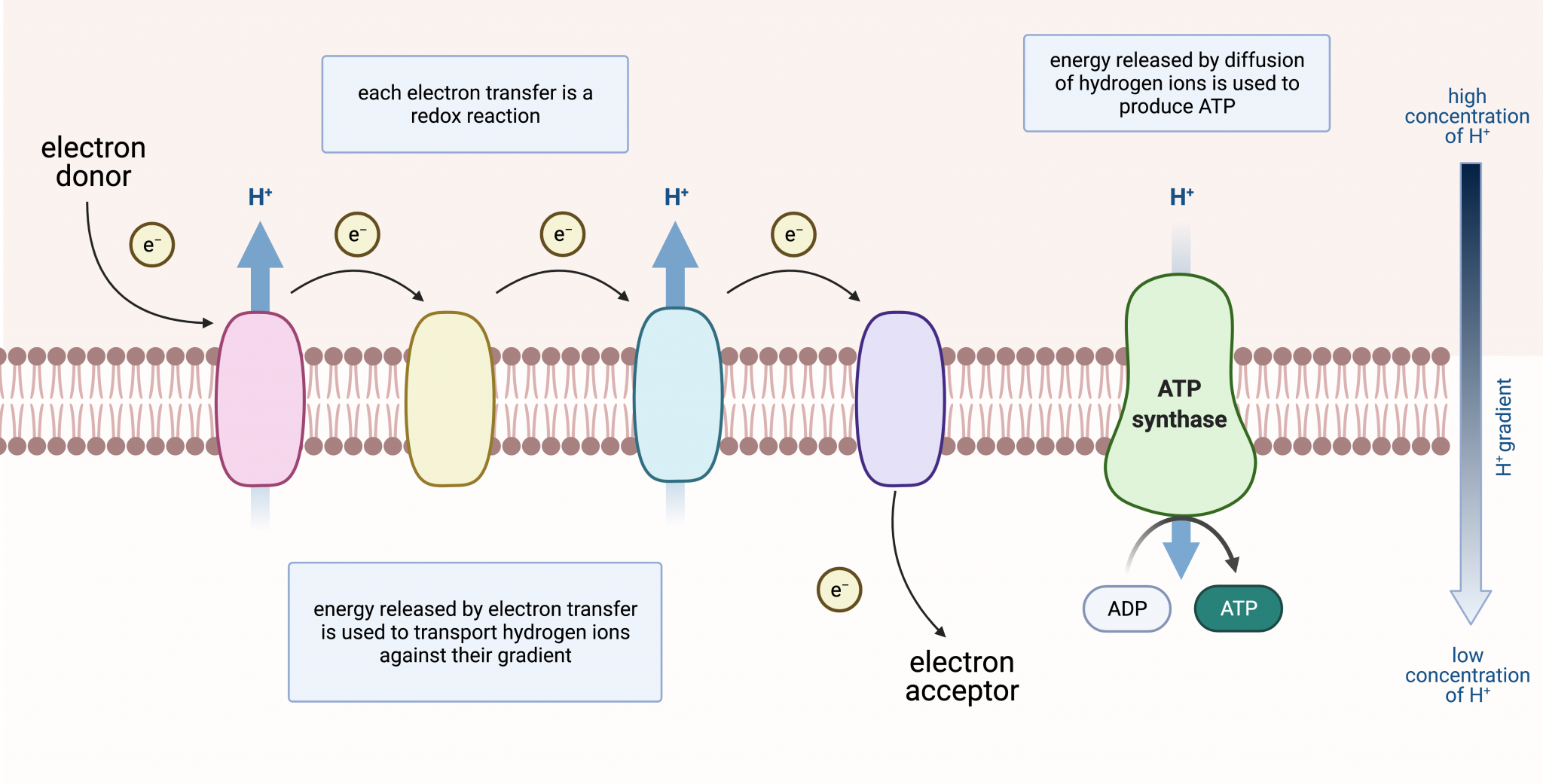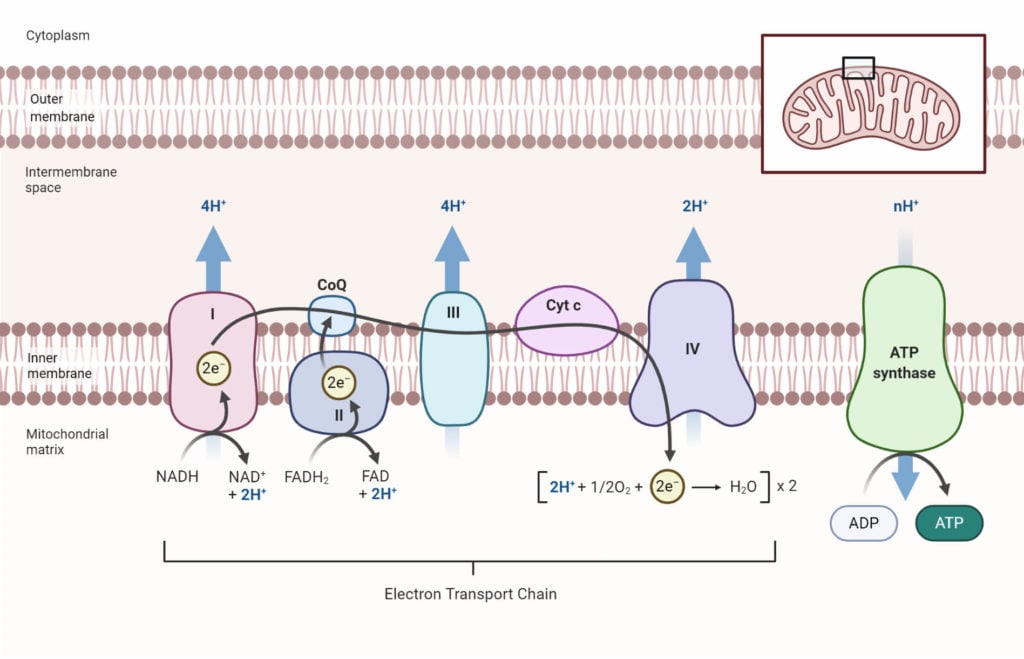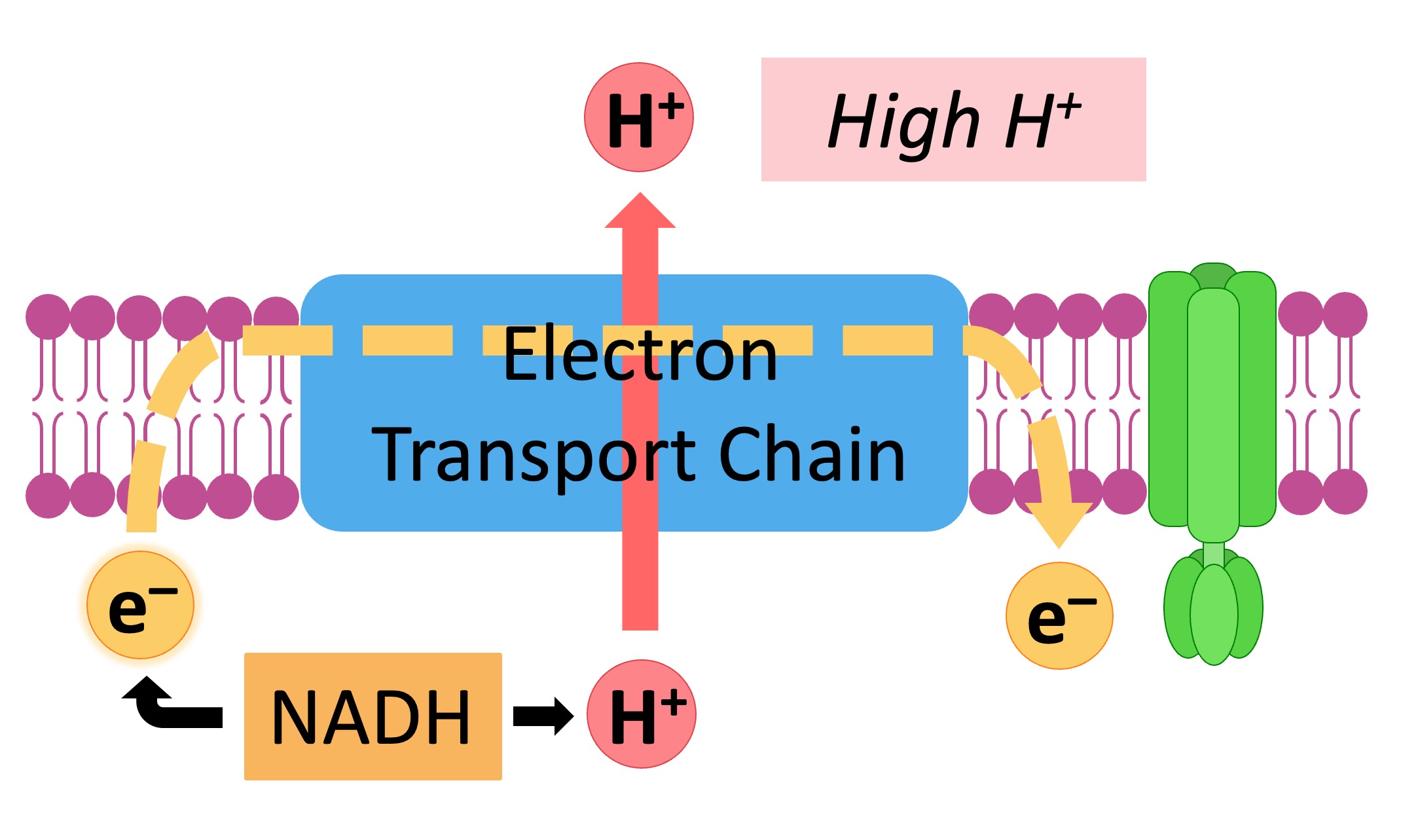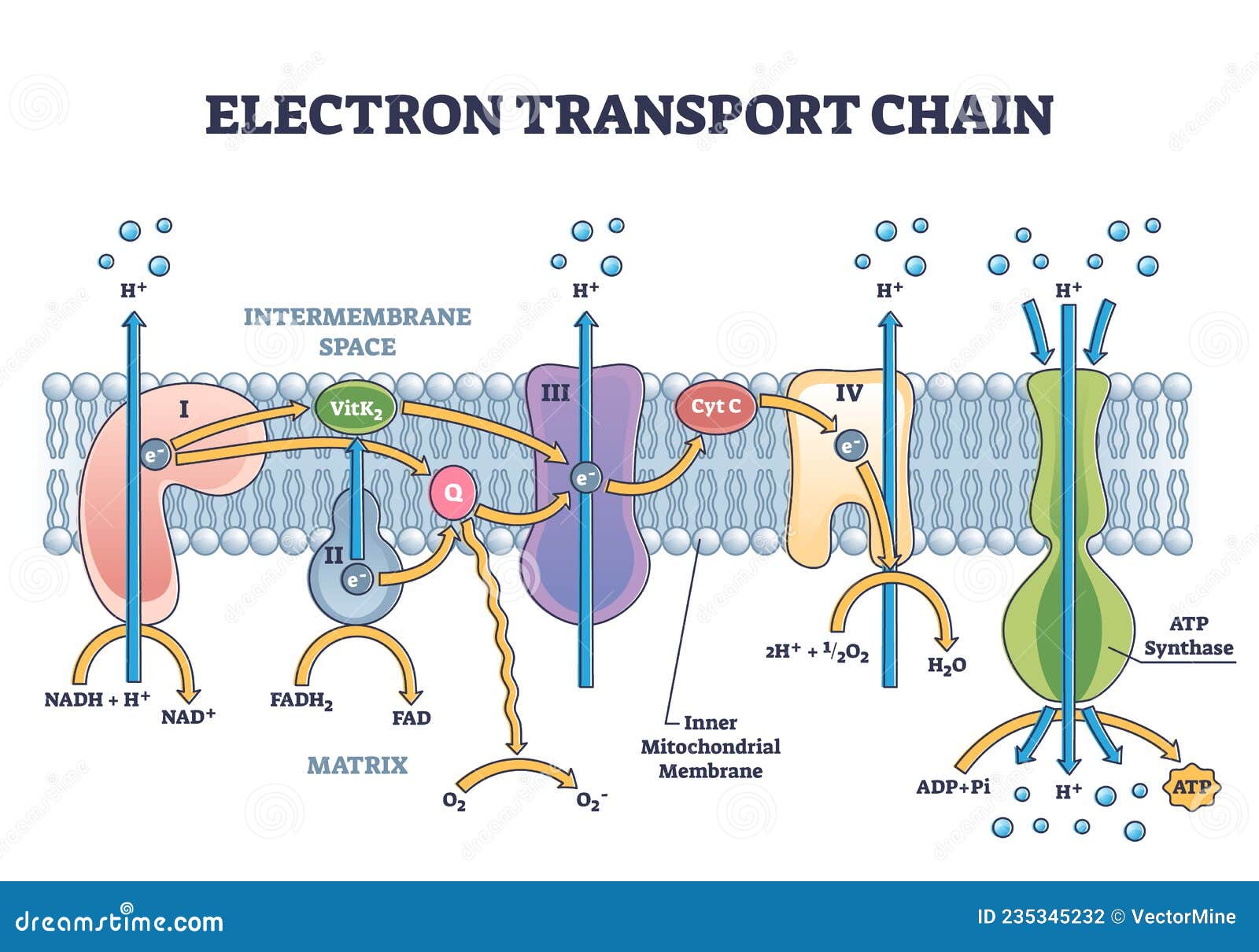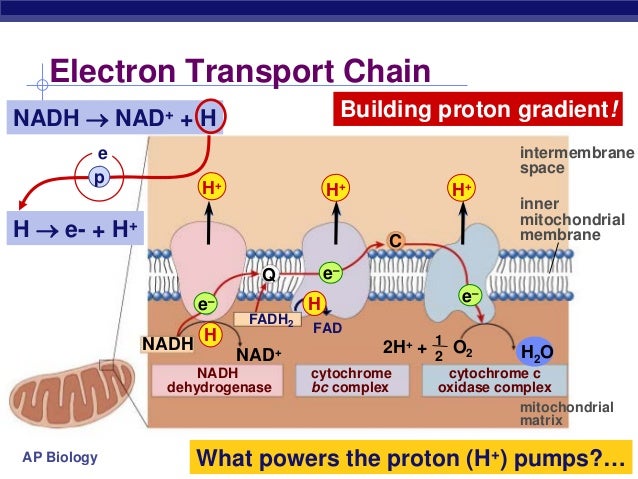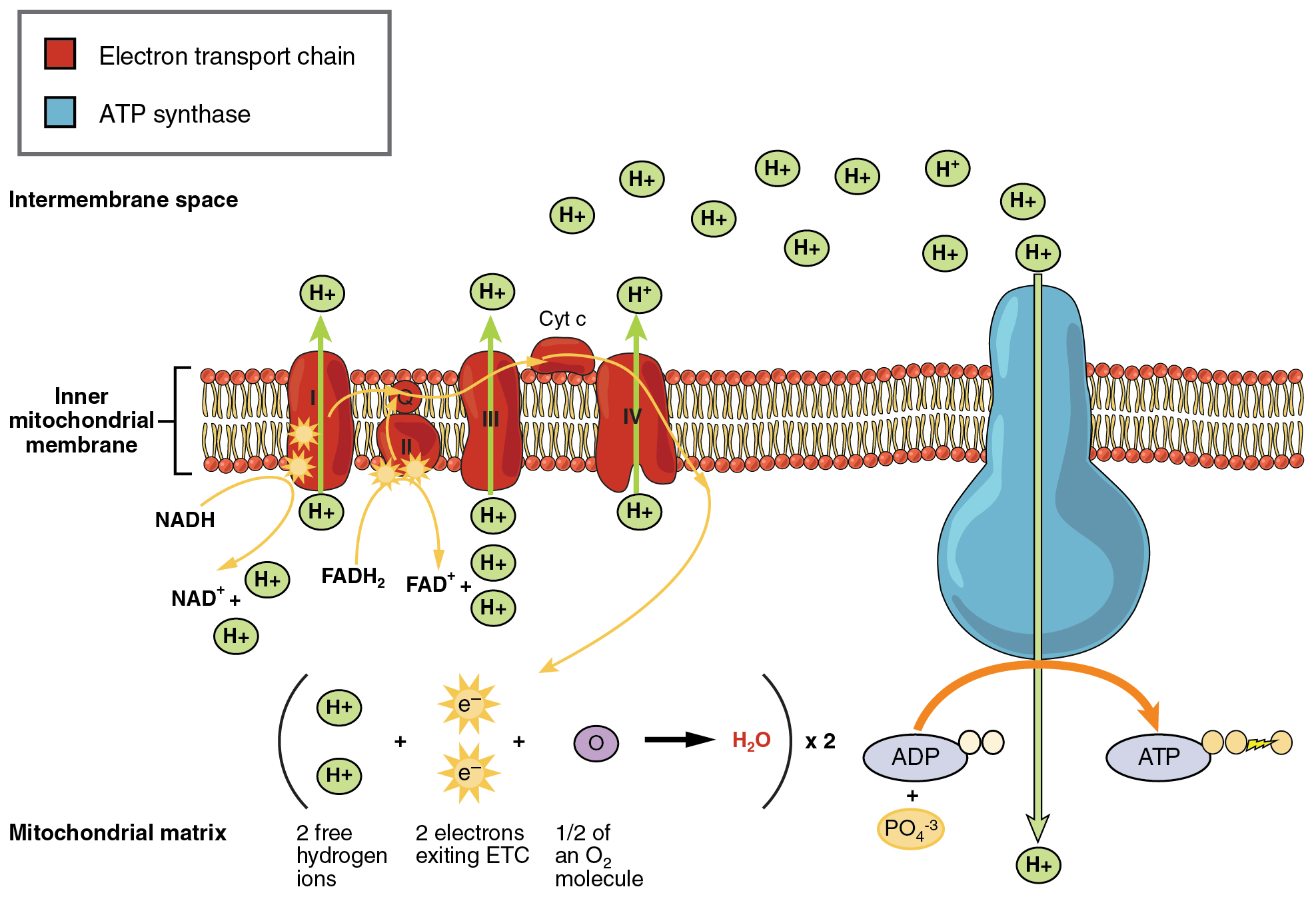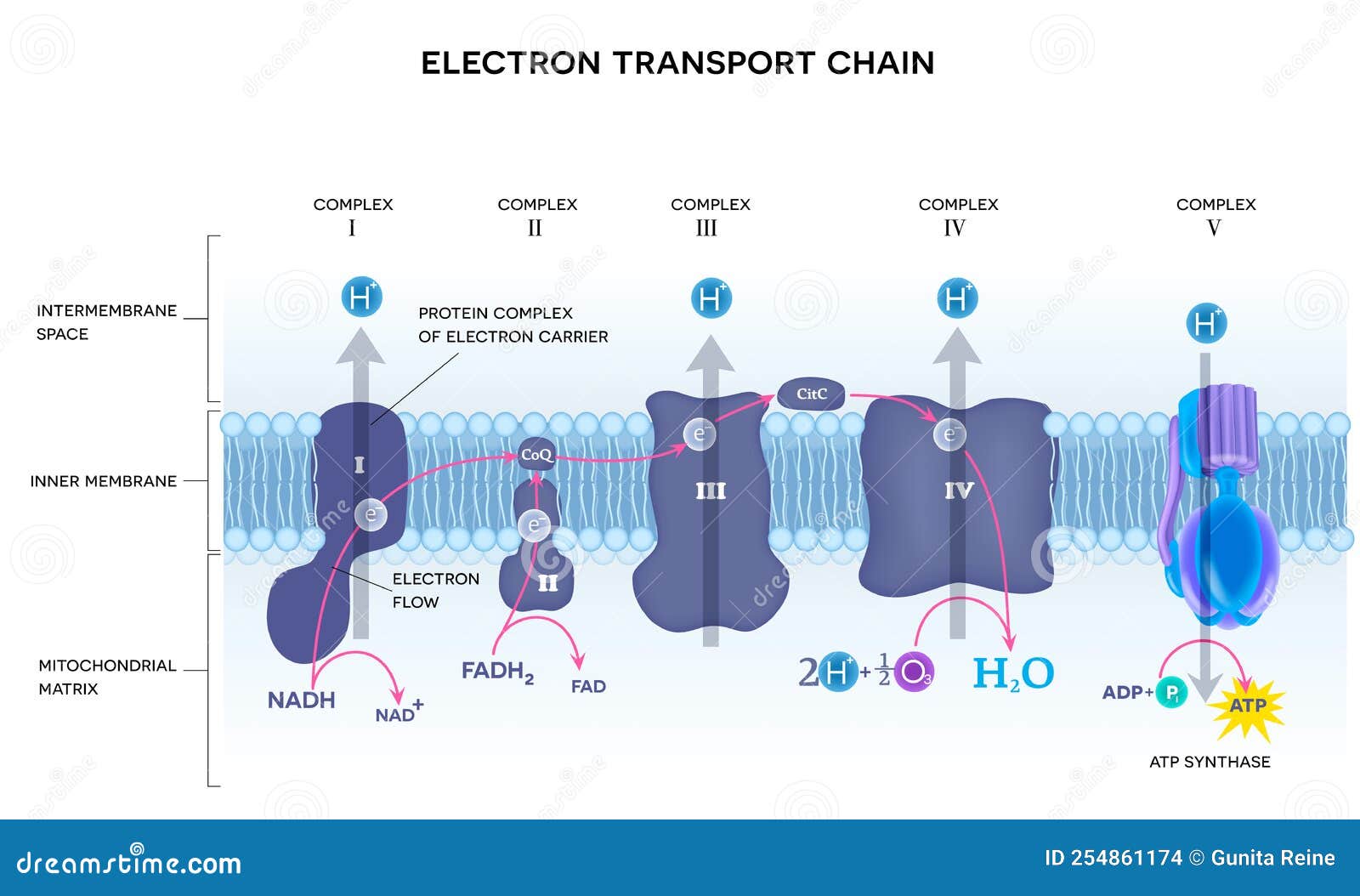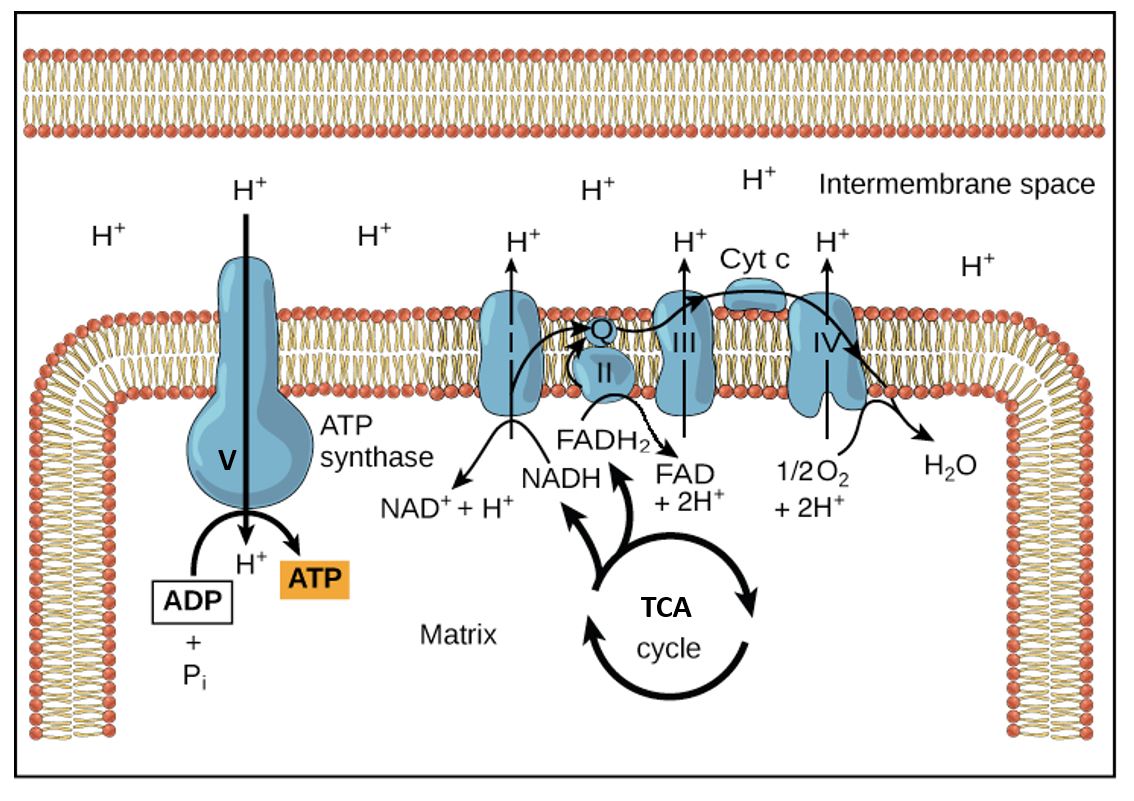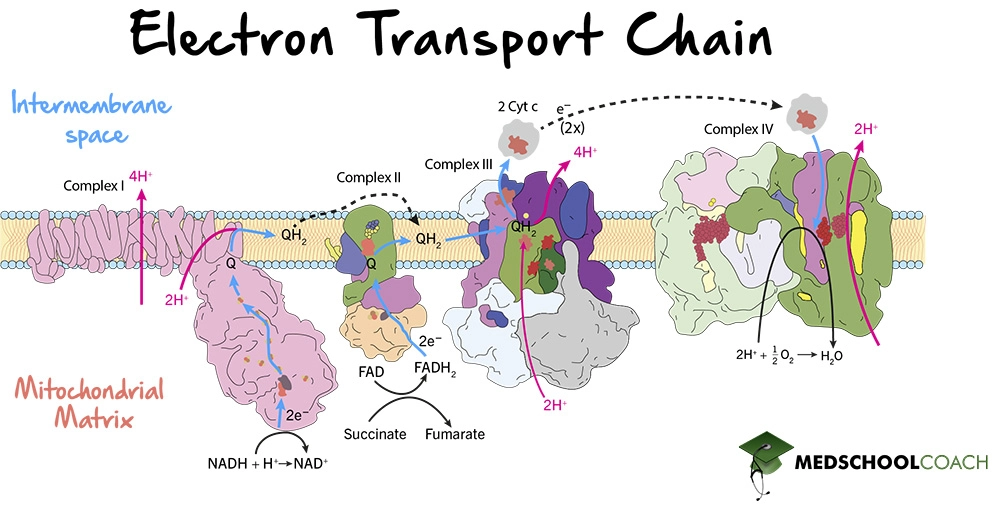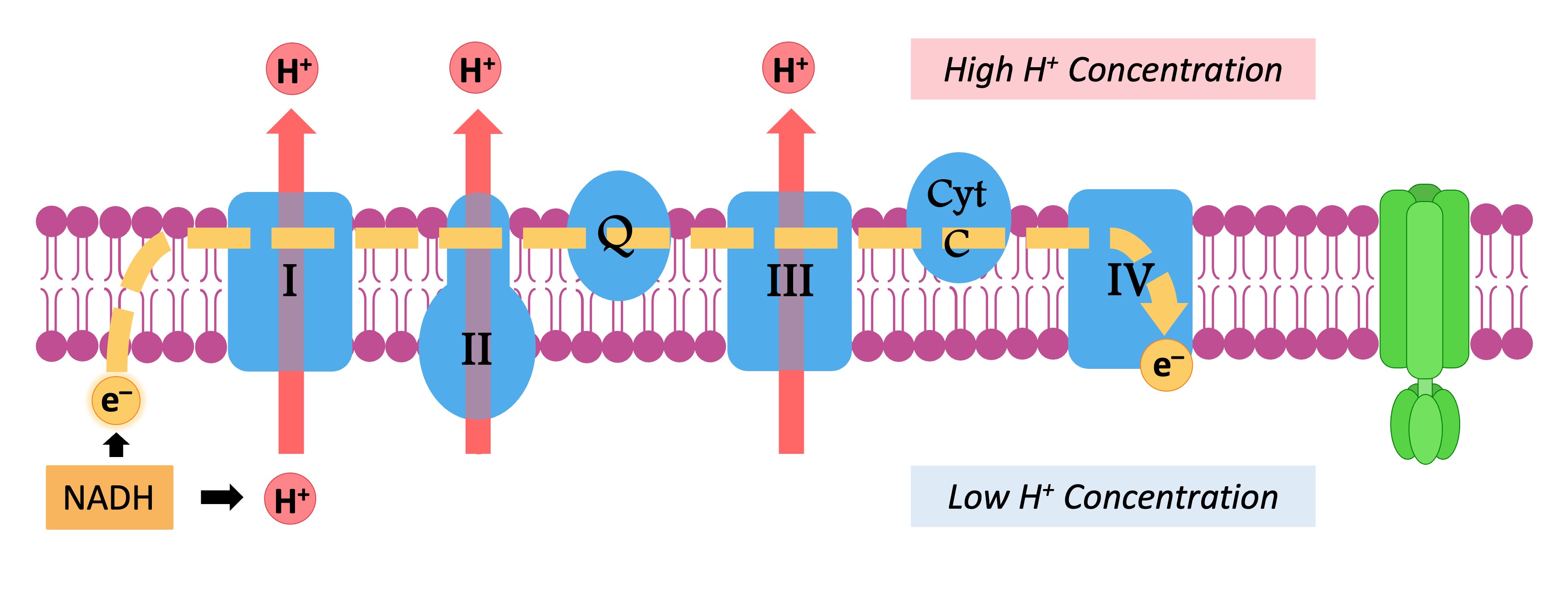What Is The End Product Of The Electron Transport Chain

In the intricate machinery of life, cellular respiration fuels nearly every living organism. At the heart of this process lies the electron transport chain (ETC), a series of protein complexes embedded in the mitochondrial membrane.
But what exactly is the end product of this crucial chain of reactions? The answer is more nuanced than a single molecule.
At its core, the ETC generates a powerful electrochemical gradient. This gradient serves as the driving force for the synthesis of adenosine triphosphate (ATP), the cell's primary energy currency, making the ETC indispensable for life as we know it.
The Electron Transport Chain: A Detailed Look
The ETC is a series of protein complexes and other molecules located in the inner mitochondrial membrane of eukaryotes (and the plasma membrane of prokaryotes). These complexes, labeled I through IV, facilitate a series of redox reactions, where electrons are passed from one molecule to the next.
This electron flow is powered by electron carriers like NADH and FADH2, which are produced during earlier stages of cellular respiration such as glycolysis and the citric acid cycle (Krebs cycle). As electrons move down the chain, protons (H+) are actively pumped from the mitochondrial matrix into the intermembrane space, establishing a high concentration gradient.
According to Dr. Emily Carter, a professor of biochemistry at the University of California, Berkeley, "The electron transport chain is not simply about moving electrons; it's about harnessing the energy released during that movement to create a proton gradient, which is then used to do work – specifically, to synthesize ATP."
Key Components and Processes
The ETC involves several crucial components: Complex I (NADH dehydrogenase), Complex II (succinate dehydrogenase), Complex III (cytochrome bc1 complex), and Complex IV (cytochrome c oxidase). Coenzyme Q and cytochrome c act as mobile electron carriers, shuttling electrons between the complexes.
As electrons move through these complexes, protons are pumped across the inner mitochondrial membrane, building up a concentration gradient. This gradient represents a form of potential energy known as the proton-motive force.
Complex IV is where the electrons ultimately end up. Here, electrons, protons, and molecular oxygen combine to form water (H2O). This reaction is vital because it removes electrons from the ETC, allowing the chain to continue functioning. Without oxygen to accept the electrons, the entire process would grind to a halt.
The Final Product: ATP Synthesis
The proton gradient generated by the ETC is used by an enzyme called ATP synthase to produce ATP. ATP synthase acts as a channel, allowing protons to flow down their concentration gradient, back into the mitochondrial matrix.
This flow of protons drives the rotation of a part of the ATP synthase enzyme, which then binds phosphate to ADP (adenosine diphosphate), creating ATP.
The process of using the proton gradient to generate ATP is called chemiosmosis. It is estimated that the ETC and chemiosmosis together can generate approximately 30-34 ATP molecules per glucose molecule, although this number can vary depending on cellular conditions.
"While water is a direct product of the electron transport chain, the most biologically significant outcome is the generation of a proton gradient that drives ATP synthesis," says Dr. David Jones, a molecular biologist at Harvard Medical School.
Therefore, the end product can be viewed in two ways: water and the proton-motive force that leads to ATP production. Both are essential for the functioning of the chain and, ultimately, the cell.
Significance and Implications
The efficiency of the ETC is crucial for overall cellular health. Dysfunctional mitochondria, often due to genetic mutations or environmental factors, can lead to a variety of diseases. These include neurological disorders, muscle weakness, and metabolic problems.
Understanding the ETC is vital for developing treatments for these diseases. Research is focused on identifying drugs that can improve mitochondrial function or bypass damaged parts of the chain.
Moreover, the ETC plays a role in aging. As we age, the efficiency of the ETC tends to decline, leading to reduced energy production and increased oxidative stress. This contributes to the overall aging process.
In Conclusion
The electron transport chain culminates in the production of water and the crucial proton gradient. This gradient powers ATP synthase, generating the vast majority of ATP that cells use for energy.
This intricate process highlights the complexity and elegance of cellular respiration. Understanding the ETC is critical for understanding life itself.
Further research into this fundamental process promises to unlock new insights into human health and disease, paving the way for innovative therapies and strategies to combat age-related decline.
